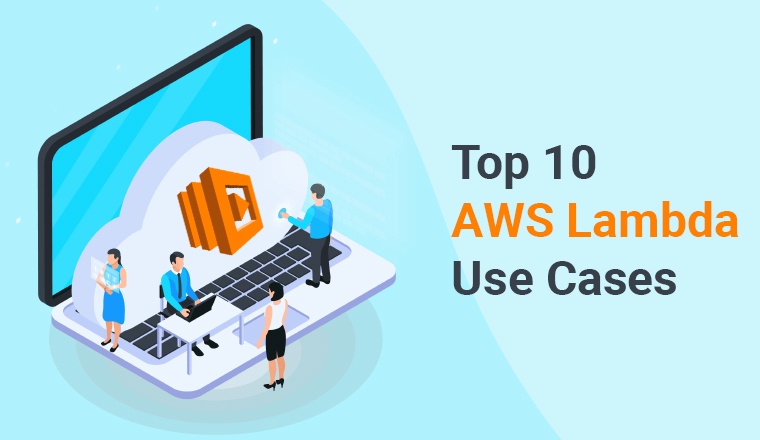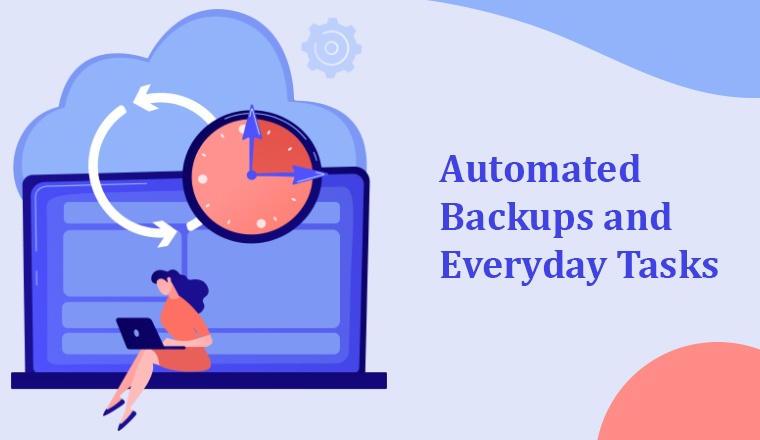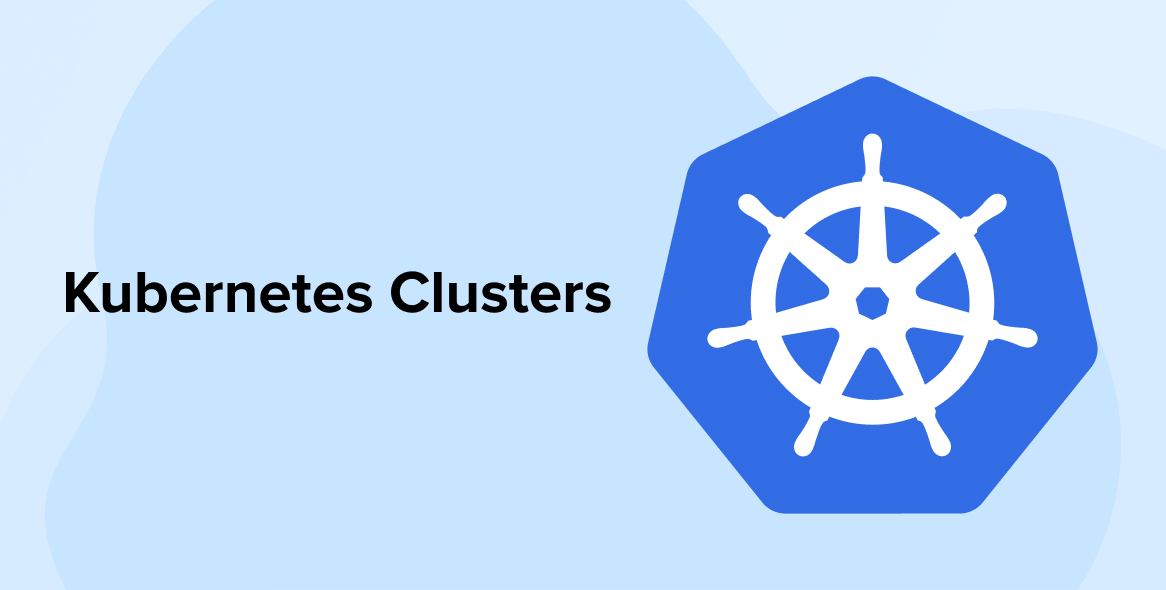
AWS Lambda is one of the most popularly used event-driven serverless computing platforms. It runs the source code in response to events. It automatically takes care of all the back-end admin and infrastructure as per the requirement to run the serverless code. Basically, it is a platform that developers use to focus on their application’s code. AWS handles everything. Since 2014, Lambda has been popular in terms of offering serverless computing services. And this has made it the fastest-growing product for AWS. App development companies use Lambda in many different scenarios and using it is very easy, it runs the source code with minimal operating costs. To know more about AWS Lambda and its use cases, let’s go through this blog.
1. Why to use AWS Lambda?
AWS Lambda’s key advantage is that it eliminates the requirement for traditional compute services, lowering operational costs and complexity. The benefits of using AWS Lambda include speedier development, better operational management, scaling, and cost savings.
Lambda function will also take care of frequent changes in memory utilization and infrastructure management. One of the most preferred reasons to choose AWS Lambda is because it uses the fundamentals of the “Pay as you go” charging approach. AWS lambda will charge you based on the amount of RAM utilized, the number of user requests made, and the execution duration rounded in milliseconds. As a result, implementing AWS Lambda eliminates the need for traditional computing services and infrastructure maintenance. This, in turn, lowers the cost and complexity of your IT operations, speeds up development, simplifies scaling, and also takes care of security patches.
2. Top 10 AWS Lambda Use Cases

2.1 Operating Serverless Websites is an Epic Example of AWS Lambda use cases
This is one of the most compelling AWS Lambda use cases in terms of pricing model and S3-hosted static websites. Consider putting the web frontend on S3 and using Cloudfront caching to speed up the content delivery. API Gateway HTTPS endpoints allow the web frontend to deliver queries to Lambda functions. It is feasible to run a whole website on serverless architecture and platforms using this configuration.
How does Serverless architecture work?
In a nutshell, you send your function’s code to AWS, and AWS runs it, you pay for the time the function actually gets executed in a “pay as you go, model”.
Lambda serverless architecture is capable of taking care of the application logic and storing data in a fully managed database. There are different types of databases like RDS for relational, or DynamoDB for non-relational databases which are compatible across all other serverless technologies. You can develop a serverless framework, a fully supportive lambda interface, and other serverless cloud comparisons & services. Developing a platform that is compatible across all serverless websites becomes easier with Lambda functions.
To isolate your Lambda functions and databases from other networks, you can host your serverless website in a Virtual private connection. When it comes to Lambda, API Gateway, and S3, you only pay for the traffic incurred; the only fixed cost is the database service. Dynamic API requests can be provided via AWS Lambda in combination with API Gateway or AppSync, while static content can be stored in S3 and CloudFront.
2.2 AWS Lambda Use Case for Multi-Location Media Transformation
Multilocation media transformation- what does this mean? Well, a Lambda function can be used to alter files quickly and reliably. This could work for nearly any type of file: text, video, compressed, etc. The images in addition will be stored in an S3 bucket. The only reason this is preferred is that Lambda has the ability to create multi-platform media that enhances AWS Lambda use cases. Everyone needs software that works concurrently and best at all given platforms.
Nowadays, cross-device development is required, which comes at a premium cost and necessitates a significant amount of effort from the development team. AWS Lambda can help you tackle this problem by automating the process. In the S3 bucket when you store images, you can compress or expand the size of images as per the use. Also, when altering the design, there’s no need to resize your image archive; there’s no need to store images in every format and keep previous versions. Amazon Lambda will do it on its own and manage the version controls and multi-location media transformations.
2.3 Real-time Notifications with AWS Lambda & SNS
Another use case for AWS Lambda is analyzing data metrics in order to process data in real-time and react to it. It’s not uncommon for a program or even a website to deal with real-time data. You can ingest data from communication devices, peripherals interacting with the physical world, and human input devices. Most of the time, this data will arrive in little bursts or even a few bytes at a time in easily passable formats.
However, there may be occasions when your application requires significant amounts of streaming input data, and shifting that data to temporary storage for subsequent processing isn’t the best solution. The data from the website is captured using Amazon Kinesis Stream, while Lambda automatically grows the number of functions to satisfy the stream.
You can arrange your data sources across your website using the stream-based paradigm. These data sources give information to a stream, which runs a Lambda function.
You can also use a manual invocation with the RequestResponse type. There are other benefits of real-time testing that will make the process enhanced with new features and improved customer experience. This will trigger the AWS lambda function to perform better than other cloud architects.
2.4 Mass Emailing Using AWS Lambda & SES
SNS (Amazon Simple Notification Service) is in charge of topic creation and determining which subscribers will be notified. The AWS Lambda functions of messages can change it and publish it.
Every year, large organizations send billions of transactional emails, as well as newsletters and other items. It is a part of their everyday work and they have to innovate this approach every now and then. Every marketing approach now requires the use of mass emailing. It is, nevertheless, highly costly and necessitates technical expertise.
This one is another essential use case of AWS Lambda that works best with SES (Simple email service) that is smooth by making a way in assisting and arranging an affordable in-house flow of email. Its working is also quite easy. All the user needs to do is upload a CSV file that will push to initiate the S3 event. Trailing that the Lambda function will also get evoked adding DynamoDB to the database. Now the email will be directly and quickly passed on to the newly added address.
2.5 AWS Lambda in Discovering Alexa
Who hasn’t heard of Alexa? It is one of the largest inventions of Artificial Intelligence in the field which has digitally transformed the world. Its invention has given hope and scope to many small and large businesses to invent something on the same grounds. Amazon used AWS Lambda to develop Alexa.
Alexa is an intelligent voice-control agent by Amazon’s cloud. Amazon sells headless devices with no display or user interface. Echo, Echo Plus, Echo Dot are just a few examples of its version or aliases.
Alexa is the technology that enables us to speak to our devices and have them reply to our commands. Alexa requires skills, which are executable commands. When you ask Alexa a question, she creates a skill that may be attached to your Lambda functions to process an event.
To do so, say “Alexa” followed by your vocal message, which is then sent to the Cloud for analysis.
2.6 Automated Backups and Everyday Tasks

When configuring EC2 instances, AWS Lambda may be used to automate activities like EBS snapshots and AMI creation. S3 bucket can be used for creating backups of images. AWS accounts can benefit from scheduled Lambda events for housekeeping. Using the boto3 Python libraries and hosted in AWS Lambda, you can quickly create backups, check for idle resources, generate reports, and other tasks that occur often in other AWS services.
2.7 Predictive Page Rendering
AWS Lambda can be used when any developer is working on rendering a predictive page to prepare web pages for data displaying. It can be used as a supporting role. For instance, developers can use a Lambda-based application to retrieve documents and multimedia files that may be utilized by the next page requested. And it can also be used to perform rendering of initial stages to display the data.
2.8 Serverless Authentication Example Using AWS Cognito
Personalization plays an important role in any type of blog or website. For this, developers use Amazon Cognito with AWS Lambda. It enables the developers to add pre and post-login hooks that can help in executing the custom logic. Basically, once the AWS Lambda function is created, it can be triggered as per the user’s pool operations like sign-in, sign-up, and user confirmation.
2.9 For Building Serverless Chatbot

Creating and running chatbots can be a time-consuming and expensive job. And this is why developers must plan, run and scale the infrastructural resources that help them in making a chatbot code run properly. But if the development team uses AWS Lambda, developing and running a scalable chatbot architecture can be a simple process.
2.10 Real-time Data Processing
Handling real-time data is a usual task for any website or application. For any app, data can easily stream in from the physical world to the communication devices. In this case, the data gets retrieved or called in short bursts and this can make it difficult for the application to process the data. This is why AWS Lambda is used. It helps the application to quickly collect and process the required data. So handling large volumes of real-time data with AWS Lambda is easy.
3. AWS Lambda Opens Possibilities
AWS Lambda is a very powerful and unique platform that can be used in various ways for enterprises across the world. It helps in doing everything from running core functionalities of cloud platforms to enabling modern features and extending legacy software. Basically, Lambda is flexible and versatile. And this shows that it is the best choice for any business that is looking to expand its product’s capabilities. Besides this, using and managing tasks on Lambda is very easy. All these things of AWS Lambda open up a great world of possibilities in the AWS market.
Read a similar blog on AWS Lambda vs Azure functions






Many big organization's like NY Times, Netflix have migrated computing services to AWS serverless because of the flexibility it provides. Sometimes cloud architects are not sure about which cloud services to choose from. AWS Lambda being a pioneer in providing serverless architecture and has got a number of use cases for every kind of business, It is one of the many reasons why AWS Lambda is leading the cloud industry.
If you own a consumer oriented site then you must ensure that there is no delay in the response time because today consumers have a lot of alternatives available and this can lead to losing customers. With the help of AWS Lambda you can enable backend cleaning (one of the factors that makes a website load slowly),this helps in loading the website quickly thus reducing the bounce rate.